By Andrew McClain
Hi, everyone – I’m Andrew McClain, one of the graduate assistants at CAHC. I’ve written before about the residential growth patterns in Little Rock starting in the 1950s, but in this post, I’m talking about commercial development. The retail center of Little Rock used to be Main Street, downtown – people from around Arkansas would come to downtown Little Rock to shop on Saturdays – but beginning in the late 1950s, University Avenue (then called Hayes Street, much of which was unpaved just a decade earlier) became the new Main Street and retail center.
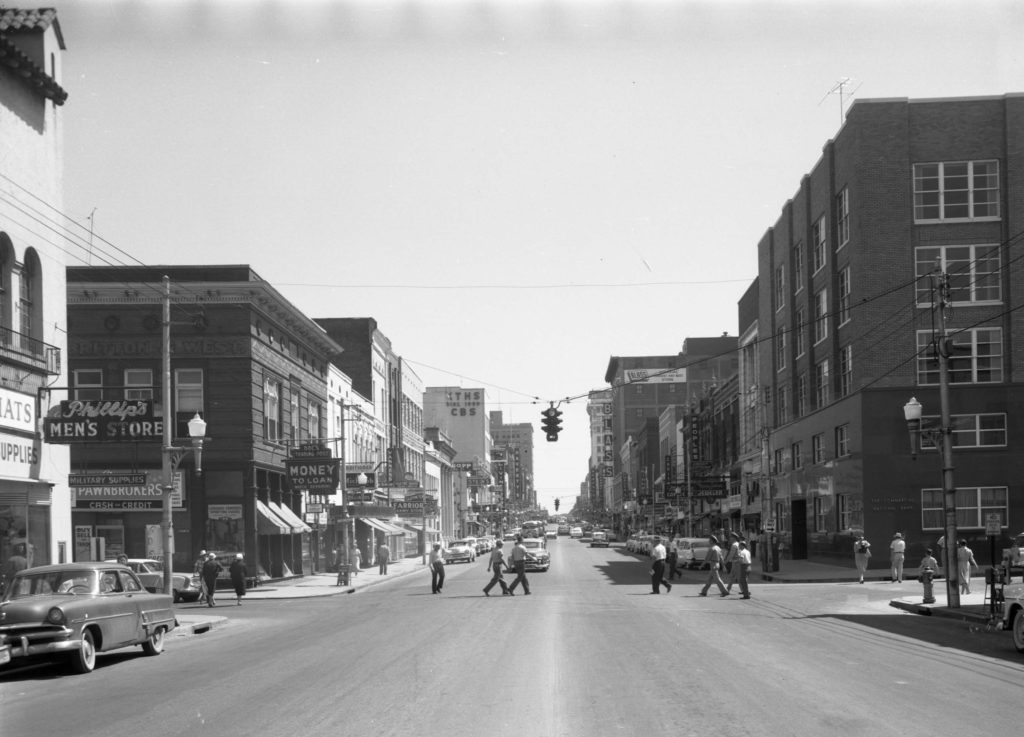
In 1956, construction began on the Town and Country Shopping Center at the corner of Hayes and Asher, within a mile of Broadmoor. When it opened two years later, it was the first shopping center of its kind in Little Rock.

Not to be outdone by what we now call a “strip mall,” Fausett began another ambitious project just two miles north, at the corner of Markham and Hayes: Park Plaza Mall.
Fausett also built a five-story office building for his company, Fausett & Co. at the corner of Markham and Hayes (a lot now occupied by a Chipotle).
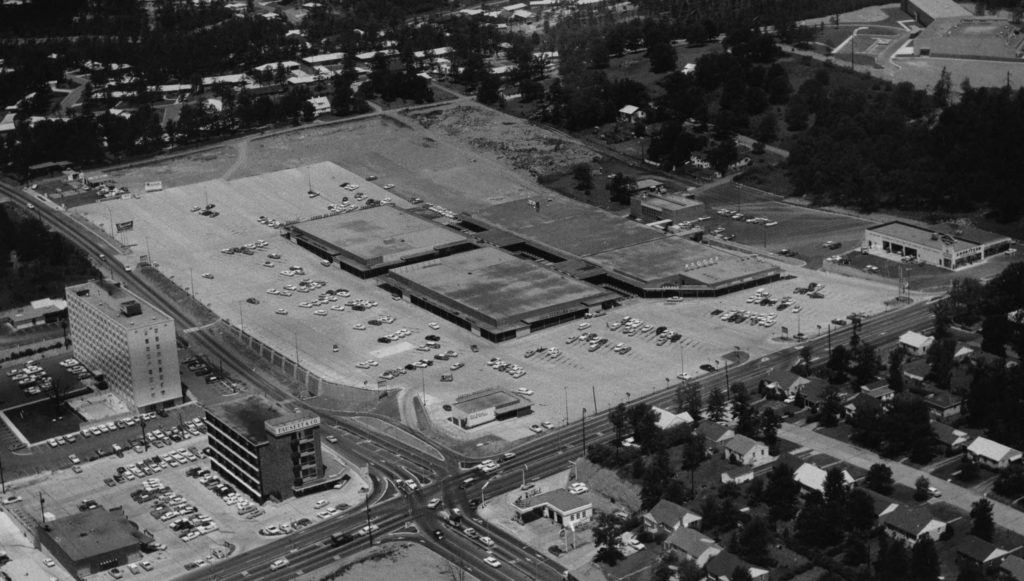
By 1957, UAMS had moved into their West Markham campus, and St. Vincent Infirmary opened at the corner of Markham and Hayes. In the midst of the Central High crisis, Hall High School opened.

That year, the Arkansas Chapter of the American Institute of Architects submitted a plan called “Main Street 1969” to the National Citizens Planning Conference. This ambitious plan (complete with architectural renderings) imagined a revitalization of downtown Little Rock as a highly accessible business district through central planning. Among these architects was Noland Blass, Jr., grandson of Gus Blass and designer of the Worthen Bank Building (now Bank of America Tower) at 200 W Capitol.
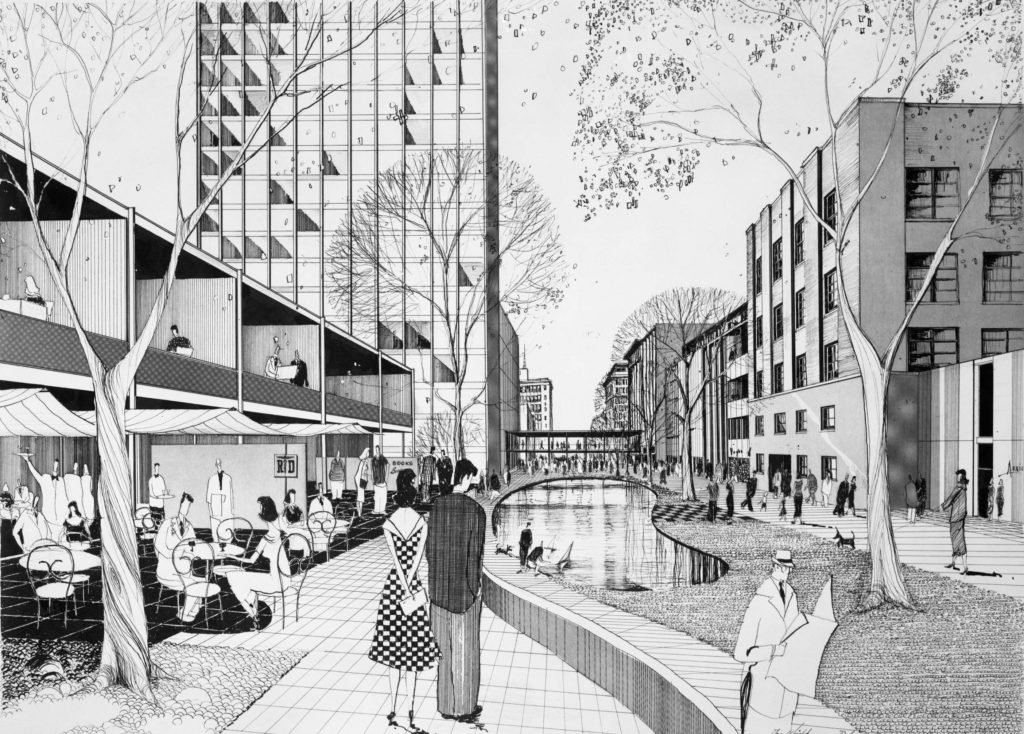
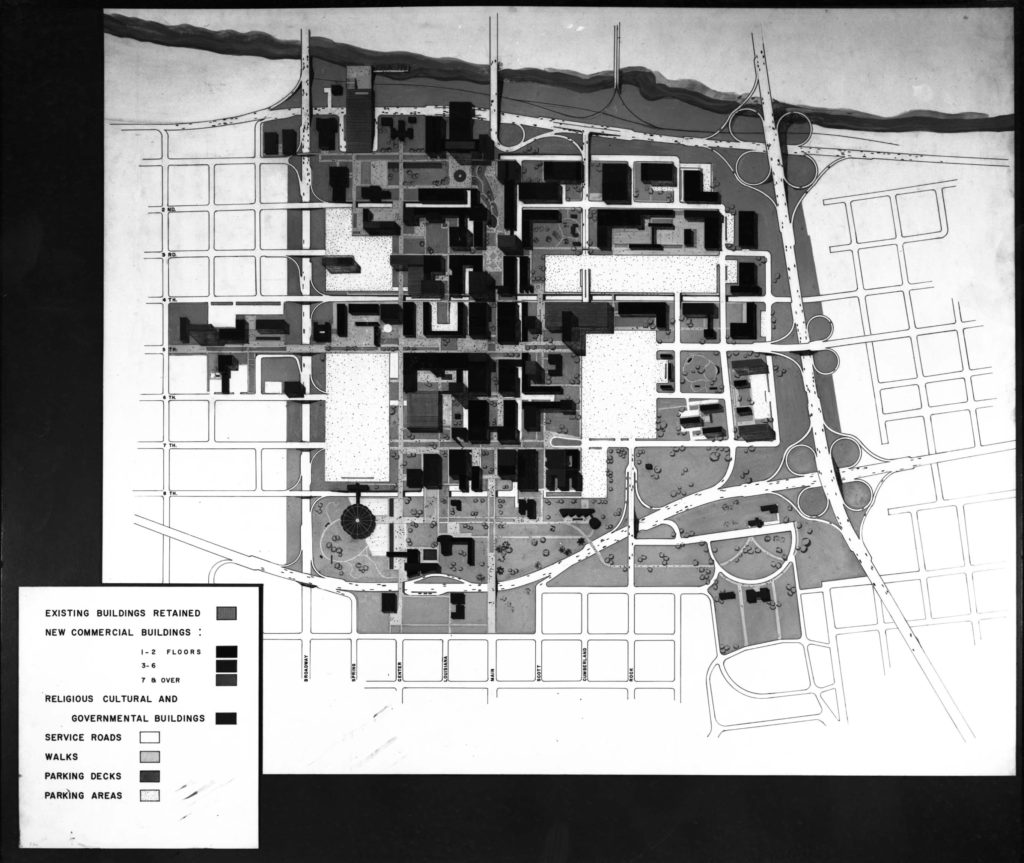
In 1955, Raymond Rebsamen became the first chair of a new organization called the Metropolitan Area Planning Commission (later Metroplan) formed for the purpose of coordinating city officials and local leaders from around the metro area to help bring Little Rock Air Force Base to Pulaski County.
While Rebsamen was not an architect himself, he was a strong proponent of central planning and urban renewal, and a booster of the architects’ plan, which was officially folded into the Central Little Rock Urban Renewal Project by 1961
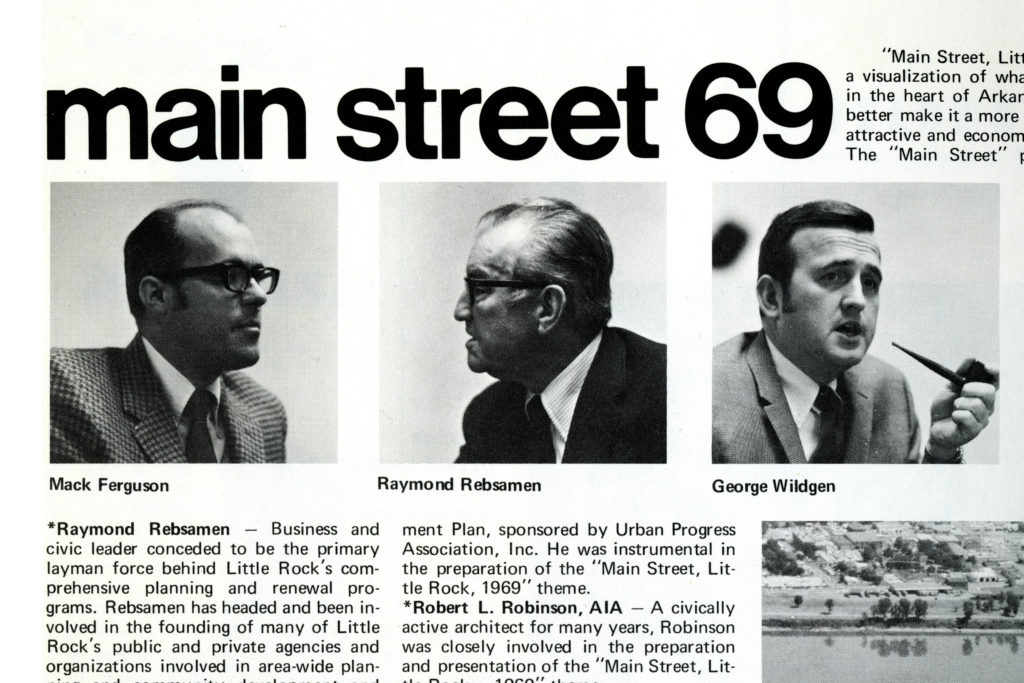
A Little Rock Center for Arkansas History and Culture, Raymond Rebsamen Papers.
1959 was the year that Hayes was officially renamed University, after several years of planning and paving the southern end of the street. It was also the year that Park Plaza officially opened, with a Gus Blass department store as one of its anchors, marking the first time the company ventured out of the Main Street retail district. The 10-story residential Plaza Tower (now called “Midtown Park”) was completed. Union National Bank opened a branch at Park Plaza.
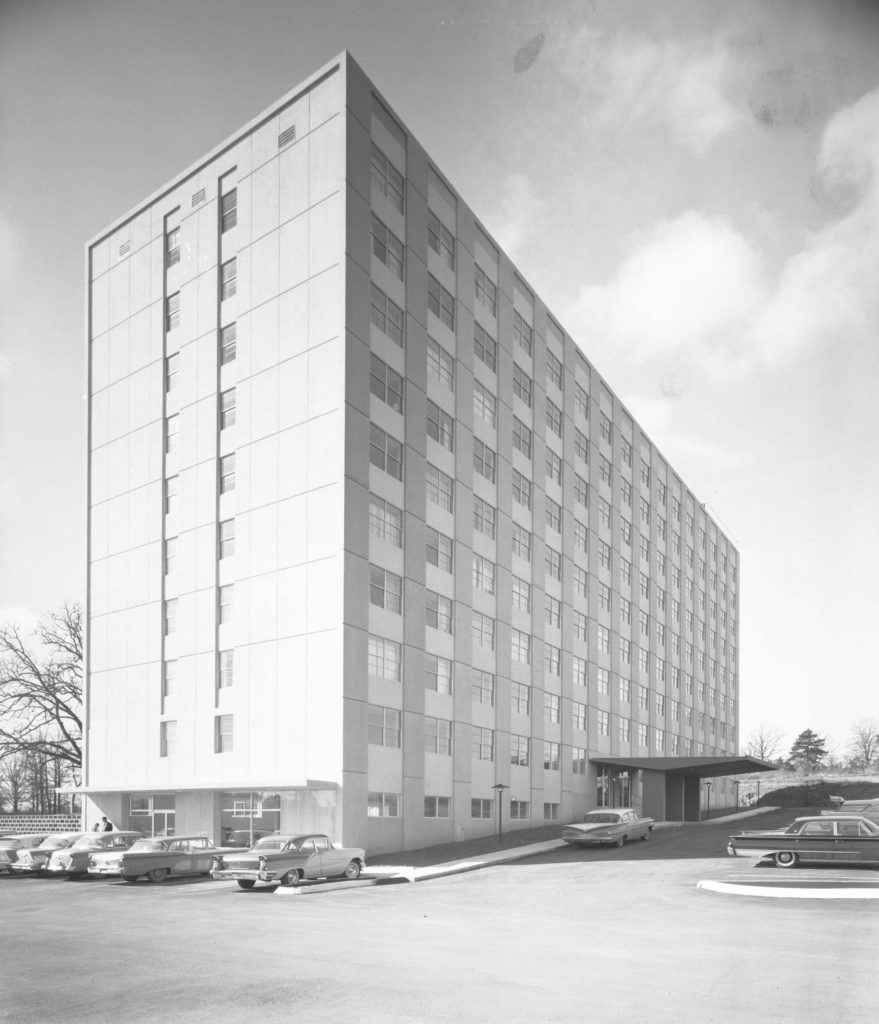
Part of the Main Street 1969 plan was to revitalize downtown by making it a business and financial district, so the “new Main Street” out west only accelerated the mass exodus of retail shops from the area, making downtown ghostly during nights and weekends for many years, despite various efforts to reintroduce retail and tourism. While the Markham/University area remains a retail hub, it has rebranded as “Midtown,” which is fitting, because even though it was the western edge of Little Rock in 1957, (four miles west of Main Street) the newest major retail spot is seven miles west of Park Plaza, in the Promenade at Chenal.
The Little Rock Downtown Partnership was formed in 1985, and can be credited with many of the improvements that came to downtown Little Rock in the mid-90s, including improvements to the convention center, and the creation of the River Market, among other things.